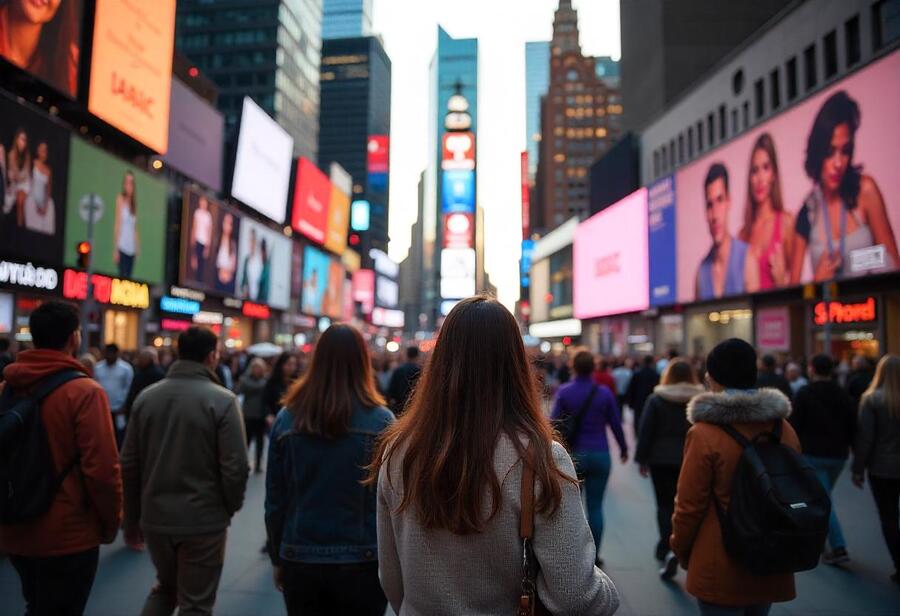Sunday, July 6, 2025
US, France, Spain, Italy, Greece, Japan, China, and other major travel hotspots are grappling with the devastating effects of overtourism as unchecked visitor growth threatens to overwhelm local infrastructure and resources. In recent years, cheap flights, social media influence, and advanced travel planning technologies have made it easier for millions of tourists to flock to iconic cities and landmarks. While tourism boosts local economies, the sheer volume of visitors is putting immense pressure on these popular destinations. Major tourist spots like the US, France, Spain, Italy, Greece, Japan, and China are now facing overcrowded streets, overburdened public services, and environmental strain, creating a need for urgent solutions to manage this rapid growth.
In 2024, Europe set a new record by welcoming 747 million international visitors, according to the U.N.’s World Tourism Barometer, making it the most-visited continent globally. Southern and Western Europe absorbed the lion’s share, attracting over 70% of this traffic. While tourism fuels local economies, it’s also creating significant pressure on housing, resources, and key landmarks, sparking protests and the implementation of strategies aimed at controlling its effects.
What’s Fueling the Surge?
Several factors have converged to propel the increase in international tourism. The availability of budget flights, the influence of social media, and the rise of AI-powered travel planning tools have all made Europe more accessible. Additionally, many wealthier nations are experiencing positive economic conditions, leading to more citizens traveling abroad.
Countries like the U.S., Japan, China, and the U.K. are among the top contributors to the record number of travelers, with many tourists descending on Europe during peak seasons. This uneven flow of visitors creates significant pressure on local resources and housing, with some cities struggling to cope with the influx.
Addressing Overcrowding in High-Traffic Areas
Despite growing concerns about overtourism, some experts and officials are optimistic that the issue can be managed with the right infrastructure. In Italy, for example, the use of artificial intelligence is being considered as a way to streamline ticketing at crowded attractions like Florence’s Uffizi Galleries. By allowing visitors to purchase tickets in advance, authorities could ease congestion and better regulate the flow of people.
Italy’s tourism minister has pointed out that the impact of tourism is concentrated in just a small fraction of the country’s territory, suggesting that the issue isn’t one of too many tourists overall, but rather a matter of distribution.
Southern Europe: The Epicenter of Overtourism
Southern Europe is feeling the brunt of overtourism. France, the most visited country globally, welcomed 100 million visitors in 2024, while Spain, with nearly 94 million, also saw numbers that dwarf its own population. In Spain, protests have erupted in recent years, particularly in the Canary and Balearic Islands, where the population is under 5 million but more than 15 million tourists flocked in 2024.
Venice, Rome, Capri, and Verona in Italy are also struggling to cope with the influx of visitors. The Amalfi Coast, one of Italy’s most iconic regions, even has ride-hailing apps offering private helicopter and boat rides in summer to bypass the crowds.
Greece, with four times as many tourists as residents, faces challenges too, especially in high-demand islands like Santorini and Mykonos, which grapple with water shortages, strained housing, and power issues during the summer months.
The Ripple Effects of Overtourism
Overtourism is leaving a lasting mark on European cities. In Spain, the proliferation of short-term rental properties on platforms like Airbnb is driving up local housing prices, making it increasingly difficult for residents to find affordable accommodation. Activists and academics argue that local businesses are being replaced by international chains and tourist shops, altering the fabric of these communities.
In Greece, water shortages are becoming an even bigger problem, with some islands suffering from droughts exacerbated by the high number of visitors. Meanwhile, France’s Louvre Museum, the most-visited museum in the world, had to close temporarily due to staff protests, highlighting the building’s deteriorating condition under the strain of millions of visitors.
Measures to Mitigate the Impact
Governments across Europe are stepping up to address the challenges of overtourism. In Spain, nearly 66,000 Airbnb listings were removed for violating local regulations, and Barcelona is set to phase out short-term rental licenses by 2028 to ensure the city remains affordable for its residents.
Greece has introduced a cruise tax for visitors to islands like Mykonos, charging \$23 per person, while less-traveled destinations like Samos will charge a lower fee of \$5.70. The country is also encouraging visitors to explore quieter destinations to help alleviate pressure on more popular spots.
In addition to these measures, islands are using desalination technology and water tankers to address water scarcity. Greece’s Acropolis has implemented staggered visiting hours, and Venice has introduced an entry fee for day-trippers during peak season, with charges ranging from \$6 to \$12.
The Path Forward
While Europe’s record-breaking tourist arrivals provide an economic boost, the growing pressure on infrastructure, housing, and natural resources cannot be ignored. Moving forward, it will be crucial for European destinations to find a balance that allows for continued growth in tourism while preserving the integrity of their communities and environments. This will require a combination of thoughtful regulations, innovative technologies, and a focus on distributing visitors more evenly across regions.
«Enjoyed this post? Never miss out on future posts by following us»
